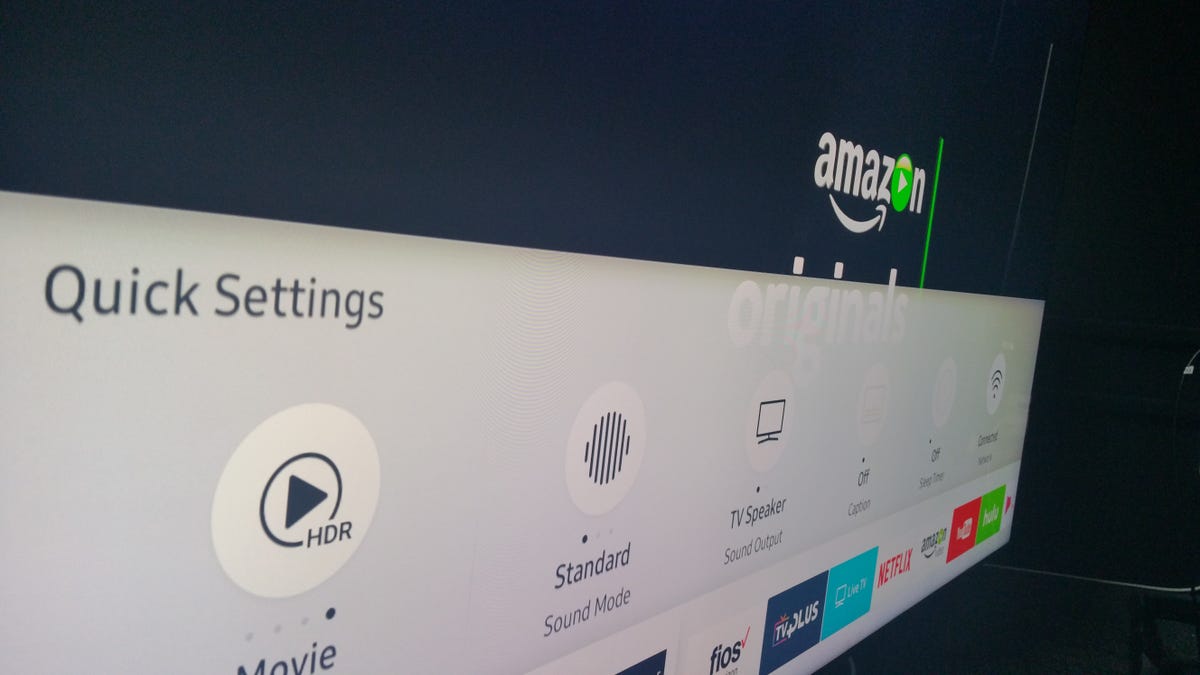Samsung's new HD TV format targets arch-rival LG and Dolby Vision
Continuing its struggle against LG, Samsung equips its TVs with yet another HDR format. But it's not Dolby Vision.

Samsung, the biggest TV maker in the world, is also the only one that doesn't support Dolby's high dynamic range format. Its solution, this year at least, is to introduce yet another competing HDR format.
HDR10+ is its name. And only Samsung's 2017 HDR TVs are compatible as of today, including QLED models such as the Q7. A software update will arrive later this year to add HDR10+ compatibility to 2016 Samsung HDR TVs like the UNKS8000.
HDR content provider Amazon is on board. "We are thrilled to be the first streaming service provider to work with Samsung to make HDR10+ available on Prime Video globally later this year," said Greg Hart, Vice President of Amazon Video in a statement.
HDR promises improved image quality over standard dynamic range video, with brighter highlights and more realistic colors. It's also a confusing mishmash at least four standards, with HDR10+ making five.
Standards soup
The two main HDR formats today are HDR10 and Dolby Vision. Many 2016 and 2017 TVs support both -- including LG, Vizio, Sony and TCL -- as do the major streaming providers Netflix and Amazon. 4K Blu-ray currently only offers HDR10 content, although Dolby Vision discs and players are coming this year too.
Later this year some TV makers will add support for another HDR format, HLG (hybrid log gamma), which is designed for broadcast TV. Technicolor is also pushing its own HDR format called Technicolor HDR. No content is currently available for either one.
In our tests at CNET we've lauded HDR in general -- it provides a much more noticeable improvement than 4K resolution, for example -- but we've found little difference between properly implemented HDR10 and Dolby Vision so far.
On paper one difference is in how the two handle metadata -- information carried in the video signal that instructs the TV how to display it. HDR10 uses "static metadata," where a single instruction is used for the entire piece of content (a movie, for example). Dolby Vision uses "dynamic metadata," which can potentially change on a scene-by-scene basis, or even frame-by-frame basis.
Samsung's rendition of the effects of its HDR10 format.
Samsung's HDR10+ will use dynamic metadata too, and it sounds a lot like Dolby Vision's version. "HDR10+ incorporates dynamic metadata that allows a high dynamic range (HDR) TV to adjust brightness levels on a scene-by-scene or even frame-by-frame basis," according to Samsung's press release.
Implemented correctly, I'm guessing HDR10+ might improve the look of some HDR content. The bigger question to me is whether it will proliferate to additional HDR sources, like Netflix or 4K Blu-ray, or add more TV providers beyond Samsung. Or whether Samsung will finally capitulate and support Dolby Vision in its 2018 TVs. We'll see.

